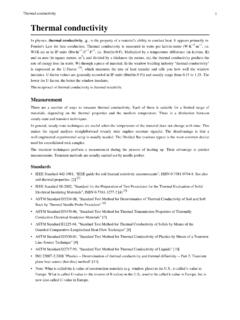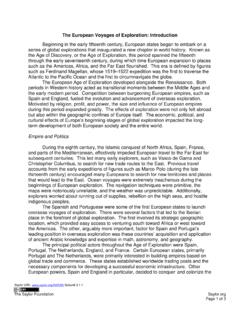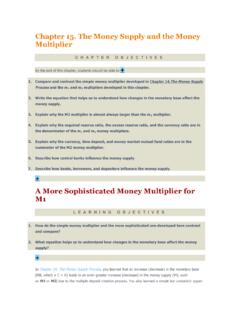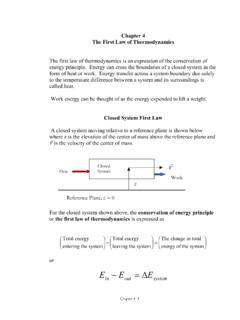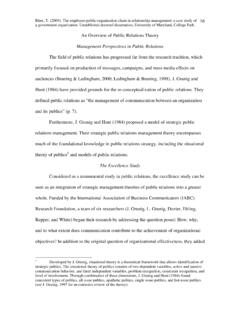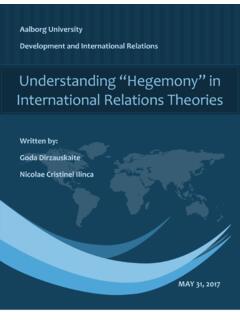Transcription of Historical and Contemporary Theories of Management
1 Saylor URL: # The Saylor Foundation Page 1 of 7 Historical and Contemporary Theories of Management Overview The idea of Management is not new. Early forms of Management concepts have been applied throughout history in order to progress as a society. Could Stonehenge have been built without the Management of all of the required tasks? What about the Mayan or Egyptian pyramids? Could the stones for these monuments have been found, cut, and moved without a plan? Management activities were needed in order to complete these massive projects. In this reading, we will explore some of the early Theories of Management , although we will not be able to go as far back as the Mayans or Egyptians.
2 We will start in the late 18th century and then work our way up to current and Contemporary 21st century concepts. Early Management Theories The Industrial Revolution as well as the growth of factories and mass production created a need for strong Management processes. Better and more efficient ways of manufacturing goods were needed in order to maximize productivity, bring down costs, and increase profitability. As a result, since the late 1800 s, theorists have developed a wide range of methods for improving Management practices. As discussed earlier in this subunit, Frederick Winslow Taylor was an early pioneer of Management theory.
3 In this reading, we will discuss Taylor s Management approach and other early Management Theories , and then move on to more modern approaches. The Scientific Approach Taylor was the founder of the Scientific Approach to Management , which focused on efficiency of movement and the task at hand. By designing the job appropriately, his theory postulates that the worker would be motivated to be more efficient and productive. Taylor s Scientific Approach to Management changed the purpose and scope of factory employees. His practices changed the role of managers from one of bullying workers to complete their jobs and turned them into skilled employees who could supervise an individual aspect of production with the goal of efficiently increasing production.
4 There were, of course, criticisms of this approach, which claimed that workers were not allowed to express any individuality in their work. Critics also claimed that this approach gave greater power to Management and reduced workers to automatons. However, Taylor s intentions were good in that he linked productivity and output with financial gain so that more productive workers would earn more money. His goals also included making the workplace safer so that workers would have fewer injuries on the job. In fact, Saylor URL: # The Saylor Foundation Page 2 of 7 many of Taylor s methods can still be seen in today s modern Management approaches.
5 The assembly line, pay-related performance, financial incentives, bonuses, and total quality Management are among some of the current practices commonly used by Management . The Administrative Approach and the Bureaucratic Approach Within the Scientific Approach to Management are two other sub- Theories : the Administrative Approach and the Bureaucratic Approach. The Administrative Approach was pioneered by Henri Fayol, who developed his Management theory in 1916. Influenced by Taylor s publication of The Principles of Scientific Management in 1911, it is unclear whether Fayol was a theorist with original ideas or whether he was a good manager who took Management practices to their next level of evolution.
6 Like Taylor, Fayol was an engineer who was a manager in French mines. Fayol believed that Management was part of all aspects of our lives and society including home, work, and government. He believed that all of the tasks required to conduct our lives could be categorized into one of five functions: planning, organizing, commanding, coordinating, and controlling. He believed that individuals could become good managers if they understood and implemented proper Management principles. Planning refers to forecasting and determining what will be needed in the future. Organizing involves gathering all the necessary resources, both in terms of raw materials and manpower.
7 Commanding results in all of the required activities being done, as needed. Coordinating is the logistics of ensuring that all jobs are conducted in a synchronized manner and that everyone involved is working as a unified team. Controlling means that all rules and regulations are followed and adhered to. Also, during the time of Taylor s Scientific Approach, the Bureaucratic Approach was proposed by Max Weber, a sociologist from Germany. His approach focused on hierarchical structure, which provided clear designations of authority, giving managers a type of legal control over their employees.
8 Managers, he stated, would be followed simply because of their elevated position. Weber viewed each organization as a bureaucracy with goals to be met at the expense of individuality or personal contribution. His practices enabled companies to operate more efficiently. However, requiring all managers and workers to adhere to a strict set of guidelines limited workers creativity and the ability to adapt to change. The Human relations Approach In the early 1920 s, Elton Mayo, a professor at Harvard, observed the importance of human interaction and personal relationships in the work place.
9 Led by Mayo, experiments in working conditions and social factors were conducted at the Western Electric company at their Hawthorne plant. These became known as the Hawthorne Saylor URL: # The Saylor Foundation Page 3 of 7 Studies. The experiments sought to understand the effects of various working conditions on employees productivity. Conditions incorporated into the experiments included varying the room s lighting levels, number of employee rest breaks, required working hours, availability of meals, room temperature variations, and other environmental workplace changes. The results were quite surprising: at each stage of the experiments, productivity climbed!
10 Employees felt that Management valued them as individuals simply because of the implemented changes. It signaled that they were cared about. Additionally, employees who were part of the experimental groups formed great social bonds, saw themselves as part of a select group, and felt that they had the freedom to make workplace choices. Even when employees went back to their original working hours and conditions, productivity continued to be at high levels. The Hawthorne Studies proved that meeting social needs of workers could enhance the workplace and positively impact productivity.


